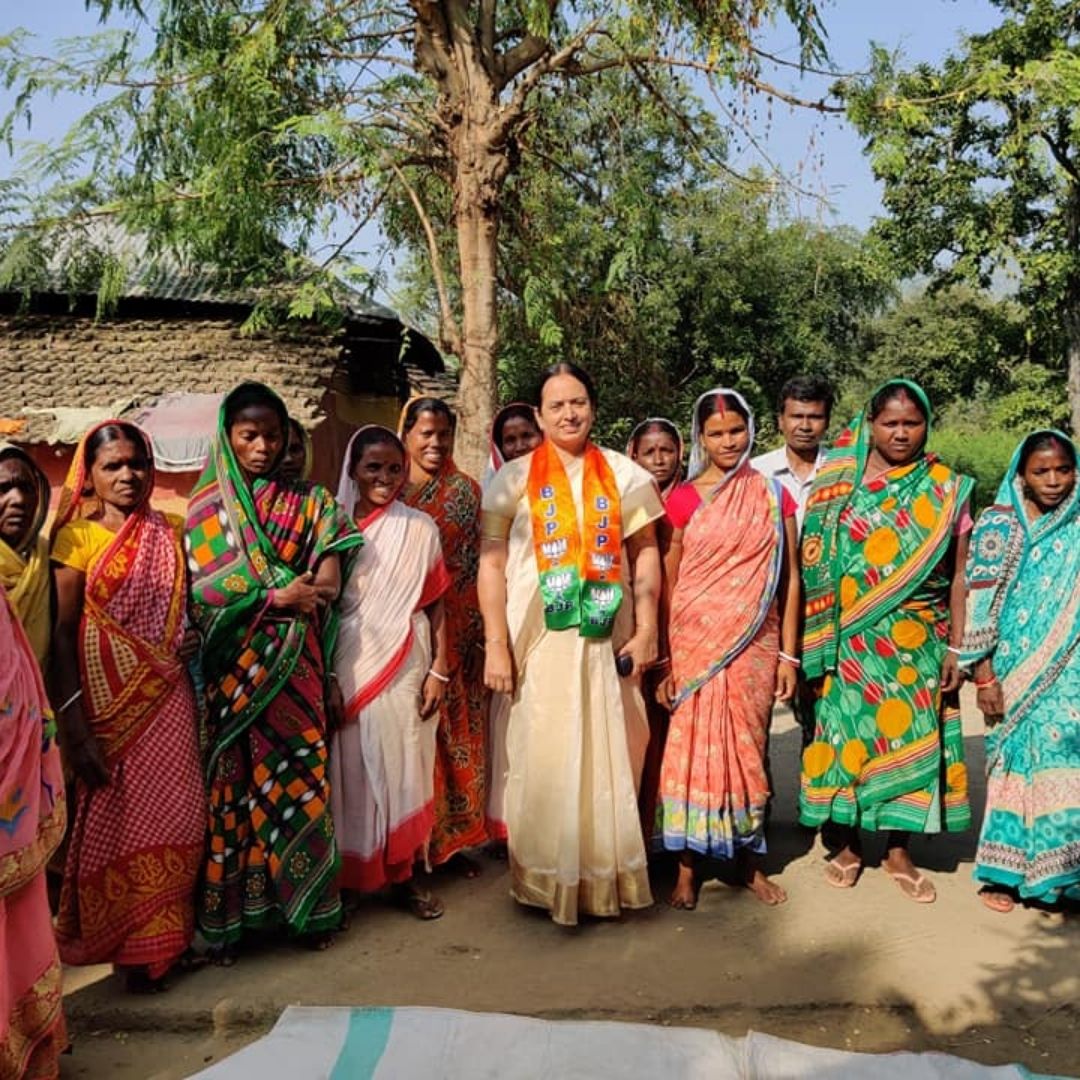
Image Credits: Facebook
'Transforming Lives!' How This Ex-Bureaucrat Became Living Goddess For People Of Primitive Jharkhand Tribes
Jharkhand, 25 Feb 2022 9:22 AM GMT
Editor : Snehadri Sarkar |
While he is a massive sports fanatic, his interest also lies in mainstream news and nitpicking trending and less talked about everyday issues.
Creatives : Tashafi Nazir
For most people, journalism sounds hectic and chaotic. For her, it's a passion she has been chasing for years. With an extensive media background, Tashafi believes in putting efforts on presenting a simple incident in the most interesting way.
With nearly 216 families, Sabars are an endangered tribe among 'Adivasis' and are predominantly dependent on forests to meet their ends.
Appalled at the sight of the menfolk of a primitive Jharkhand tribe lolling around in a drunken stupor while women crafted a range of artefacts which unfortunately had no market, a woman bureaucrat took matters in her own hands and effected a social miracle, for which she is worshipped as "Mother Goddess" in over 25 villages of the area.
Suchitra Sinha, ex-IAS officer and former Jharkhand's tourism director, is called "Devi Maa" with her photograph occupying a prominent place among the other gods and goddesses in the prayer room of tribal homes.
"She is our 'Devi Maa'. We have not seen God, but for us, this mother has always stood by us whenever we needed her," Manju, a Sabar tribe woman, residing in Samanpur village nearby Ranchi says.
"It is 'Maa' who has made sure that food is prepared in our homes, our children are fed and the male members are put on the right track of life," Manju explained.
It's not just the 250 families of Samanpur village but also Makula, Bhangad, Bindubeda, Biridudih, Chirubeda, Bereda and other areas where Sinha is venerated.
Every weekend, the 62-year-old drives 96 km from Ranchi to the hamlets of Saraikela district to meet the people of the Sabar tribe.
Her bags are packed with clothing items, sweets, flip flops, or anything she can get her relatives and acquaintances to donate for the people.
Sinha had cleared the Bihar Public Service Commission examination in 1988 when Jharkhand was carved out of Bihar. She was familiar with the underdeveloped area that was a hotbed of Maoist rebels from when she was posted as Jamshedpur's deputy collector in 1990.
However, her first visit to Samanpur village in 1996 for attending an event was the turning point in her life.
Promoting And Enhancing Sabar Craft
During her visit, she saw the tribal villagers creating baskets with locally-grown grass. Since then, she made it a point to help the endangered tribe by promoting and enhancing their craft.
With nearly 216 families, Sabars are an endangered tribe among 'Adivasis' and are predominantly dependent on forests to meet their ends.
The tribals have been making baskets for decades by weaving six feet high Kansi grass with date leaves. Sabars used to sell these baskets for a meagre Rs 50.
Suchitra was deeply disturbed by the plight of the Sabars and equally intrigued by the baskets they made. Soon, she shelled out government funds reserved for the betterment of tribals to give them food, poultry, etc. However, she knew this wasn't a sustainable response to their condition.
She took up the matter with the then-Deputy Development Commissioner (DDC), who suggested she concentrate on her official duties instead of hearing her out.
However, this did not deter Sinha, who made repeat visits to Samanpur village, speaking to the men to turn a new leaf, making the women realise their exceptional talent and soon earning their trust.
Gradually, people started listening to her, even the youths began to associate with her. However, she suffered a setback when she was transferred to New Delhi, but she was committed to ensuring that her efforts saw the light of the day.
Sinha took the items made by the villagers to the Development Commissioner for Handicrafts and informed him about the talent of the villagers. The commissioner encouraged her and suggested that the villagers be trained in modern techniques.
By now, word of Sinha's mission had spread, and the residents of other villages too began to join in enthusiastically.
Forming 'Amabalika'
She later formed a self-help group named Amabalika, and in groups of 10, the villagers were brought to New Delhi, where they were trained at the National Institute of Fashion Technology (NIFT). These villagers, in turn, trained others in their own villages and the rest, as they say, is history.
Her efforts translated into reality, and soon the handicrafts started getting markets for themselves.
Despite all these efforts, Sinha is exceptionally self-effacing.
"Please do not highlight me. Highlight the problems of the primitive tribes who need immediate help. I will be happy if corporate houses adopt the villages and develop basic infrastructure in these villages. The area lacks electricity, roads and basic facilities. We are planning to develop the place and create a craft village," Sinha said.
Upliftment Of The Sabar Tribe
She has made sure that the members of the Sabar tribe, who are on the verge of extinction, get economic benefits through their skills.
Her husband, an Indian Revenue Service officer, is posted in New Delhi, and her children are settled. She lives alone in Ranchi and wants to continue her work for the betterment of the Sabar tribals.
During the late 90s, the Sabars struggled to make Rs 500 monthly, but now they make a decent earning between Rs 4000 - Rs 7000 per month.
Their products are also listed on e-commerce giant Amazon, and Suchitra sells these products through Krafttribe by Ambalika, an online e-commerce platform.
Also Read: Delhi Students Create Platform To Track Hate Speech On Twitter During Assembly Elections
 All section
All section














